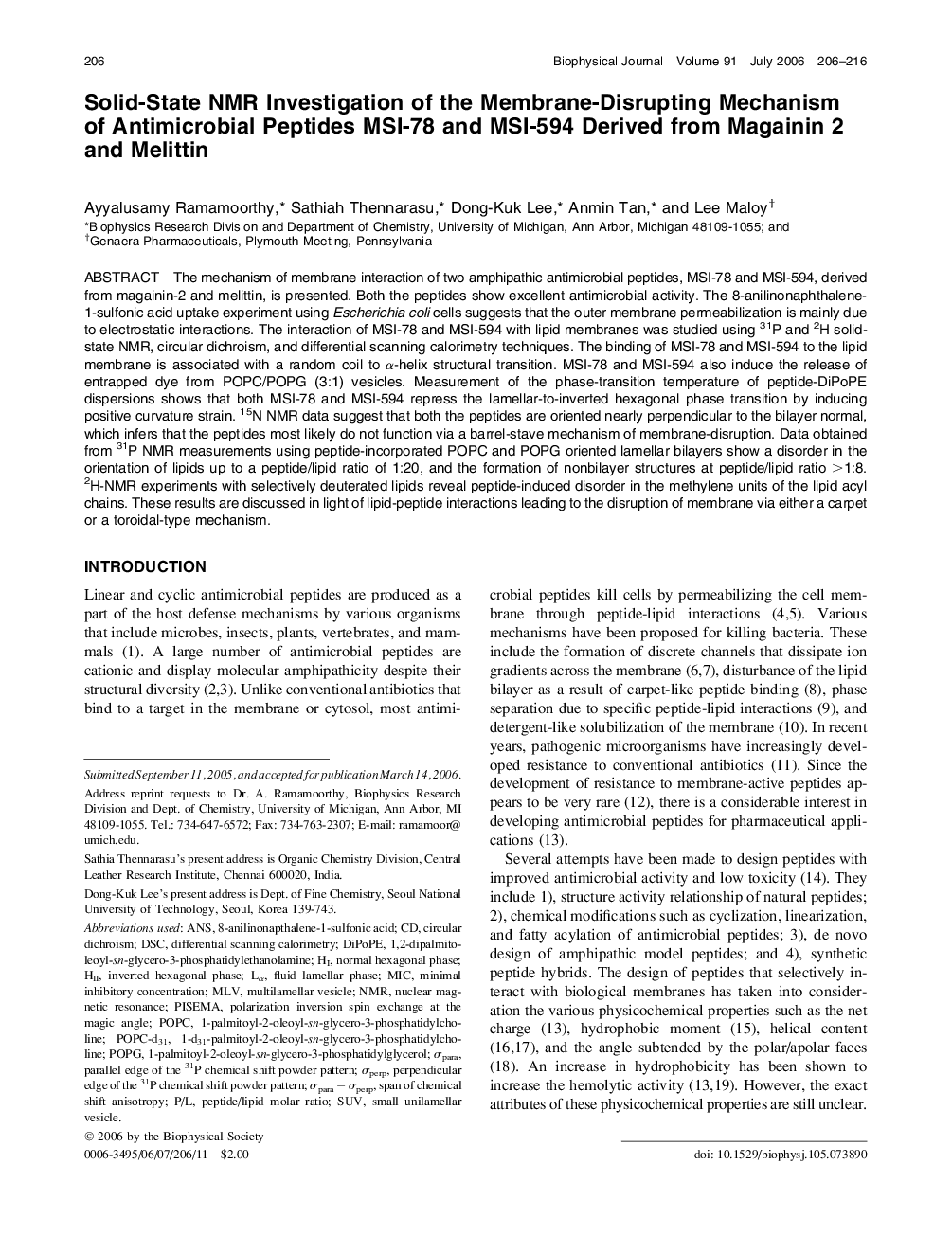| Article ID | Journal | Published Year | Pages | File Type |
|---|---|---|---|---|
| 1959073 | Biophysical Journal | 2006 | 11 Pages |
The mechanism of membrane interaction of two amphipathic antimicrobial peptides, MSI-78 and MSI-594, derived from magainin-2 and melittin, is presented. Both the peptides show excellent antimicrobial activity. The 8-anilinonaphthalene-1-sulfonic acid uptake experiment using Escherichia coli cells suggests that the outer membrane permeabilization is mainly due to electrostatic interactions. The interaction of MSI-78 and MSI-594 with lipid membranes was studied using 31P and 2H solid-state NMR, circular dichroism, and differential scanning calorimetry techniques. The binding of MSI-78 and MSI-594 to the lipid membrane is associated with a random coil to α-helix structural transition. MSI-78 and MSI-594 also induce the release of entrapped dye from POPC/POPG (3:1) vesicles. Measurement of the phase-transition temperature of peptide-DiPoPE dispersions shows that both MSI-78 and MSI-594 repress the lamellar-to-inverted hexagonal phase transition by inducing positive curvature strain. 15N NMR data suggest that both the peptides are oriented nearly perpendicular to the bilayer normal, which infers that the peptides most likely do not function via a barrel-stave mechanism of membrane-disruption. Data obtained from 31P NMR measurements using peptide-incorporated POPC and POPG oriented lamellar bilayers show a disorder in the orientation of lipids up to a peptide/lipid ratio of 1:20, and the formation of nonbilayer structures at peptide/lipid ratio >1:8. 2H-NMR experiments with selectively deuterated lipids reveal peptide-induced disorder in the methylene units of the lipid acyl chains. These results are discussed in light of lipid-peptide interactions leading to the disruption of membrane via either a carpet or a toroidal-type mechanism.
